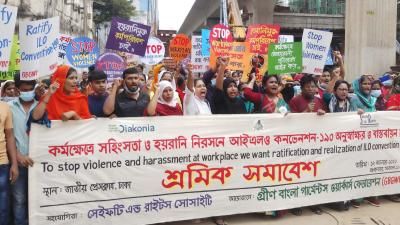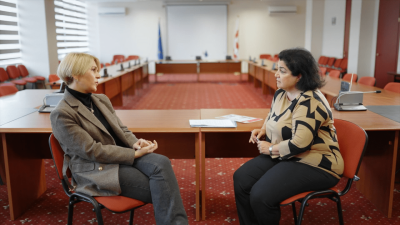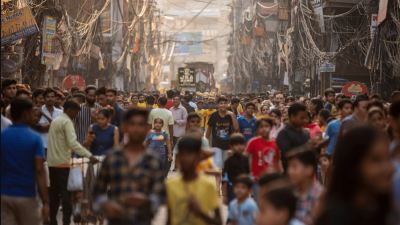
One in six people have experienced psychological harassment at work
Identified as the most common form of workplace abuse according to the data, people say they have experienced harassment through insults, threats, bullying or intimidation.
This page is approximately a 3 minute read

This report explores individual experiences across countries and demographics around the world. It provides insight for regulators, businesses, governments, communities, and researchers to help them develop relevant policies to prevent harassment for millions of people during their working lives.
Experts from the International Labour Organization and Lloyd's Register Foundation discuss the report's findings.
The data visualisation shows the proportion of men and women who reported any experience of each of the three forms of violence and harassment (physical, psychological, and sexual) asked about by the Poll, as well as the proportion who experienced different combinations of forms. This visualisation is split by gender, with women shown above and men below.
Use your cursor to hover over the data segments for more information, and scroll down to see more data. We recommend using a desktop or laptop device for the best user experience.
A new film by Susan Maybud – international consultant on gender equality and women’s advancement in the workplace – investigates global experiences of violence and harassment at work, as uncovered by ground-breaking data from the Lloyd’s Register Foundation World Risk Poll.
See moreIf you wish to use and reference the Safe at work? Global experiences of violence and harassment report in your own work, please include the following DOI: https://doi.org/10.60743/E5JH-8Z68
Example Citation in IEEE Style:
Lloyd's Register Foundation. (2023). World Risk Poll 2021: Safe at work? Global experiences of violence and harassment. Lloyd's Register Foundation. https://doi.org/10.60743/E5JH-8Z68
Explore the full dataset that underlies this report, including specific data for every country included in the World Risk Poll.
Discover country-level insights
